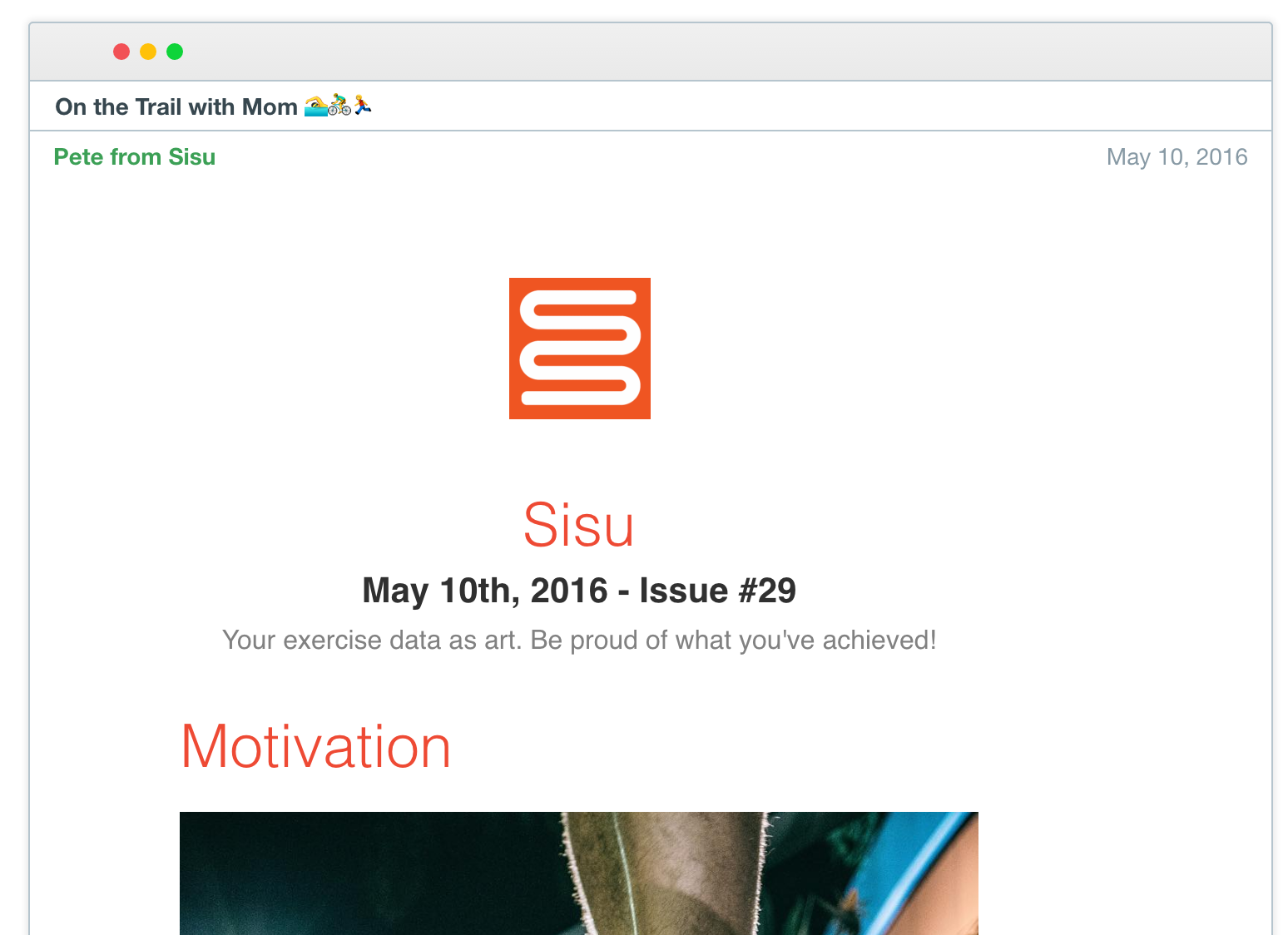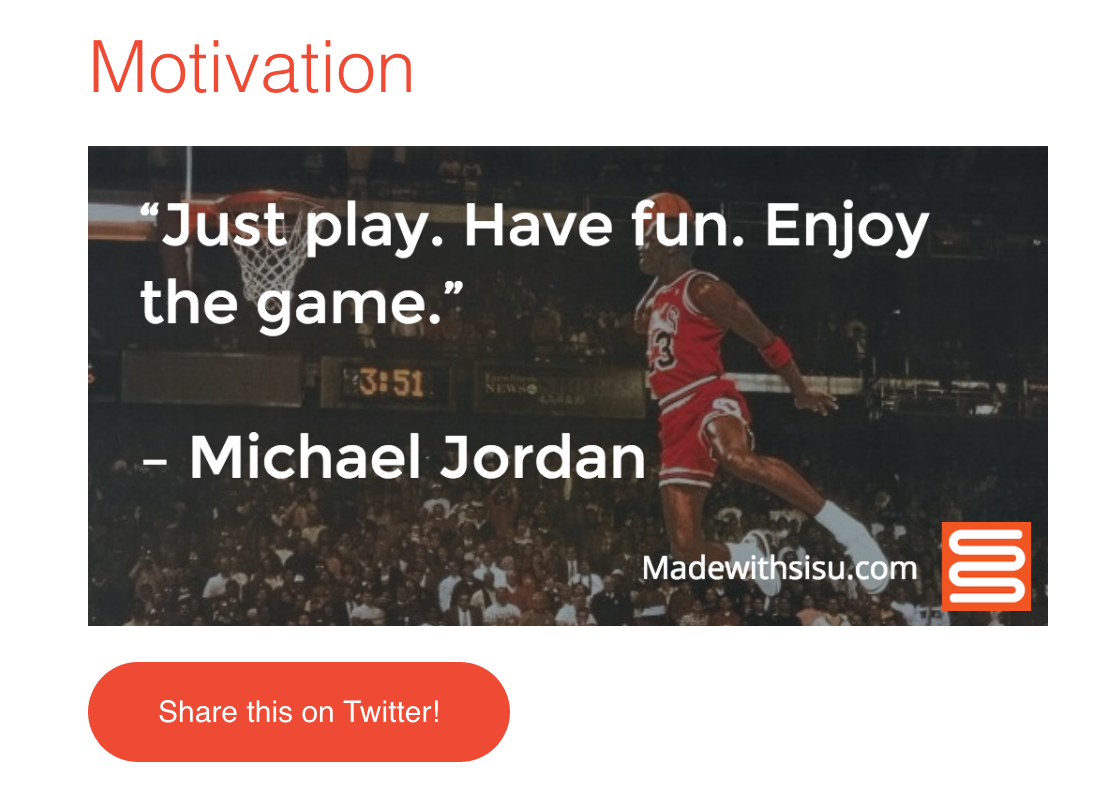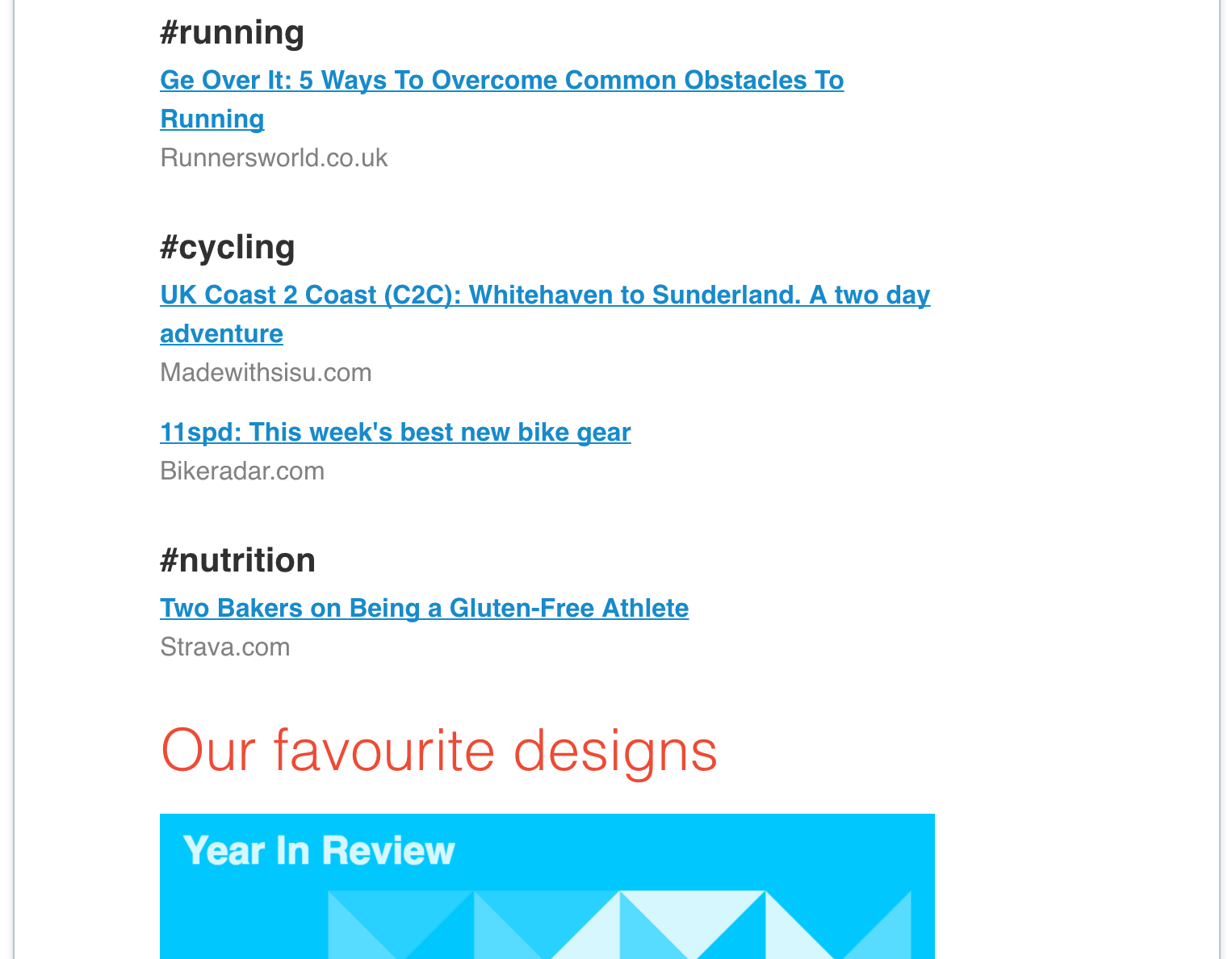Free User Generated Marketing Automation For Your Startup
When it comes to marketing automation for your startup, you’ve got no excuses. There are an abundance of tools out there to help. This guide will detail a simple, 4 step approach used at Sisu to automate our weekly newsletter. The aim of the email is to surface shareable content that our users want to read. Content that draws them to our brand and makes them believe that we’re experts in our field.
After a short amount of setup, this approach should take no more than 1 hour of your time each week. The results speak for themselves: shares, retweets, likes, follows and most importantly new users and conversions.
Step 1
Get yourself a free Buffer account. If you don’t know what Buffer is, take yourself off to read about it now. I’ll wait for you. Seriously…
Right. Now that you understand Buffer, you need to connect your Social Media accounts: Twitter, Facebook and LinkedIn. Once connected we need to find some content sources. Your content sources will be feeding your hungry Buffer account with delicious, shareable content, perhaps sprinkled with a few of your own posts.
Name some sources…
- Quuu
- Twitter bot - something to auto-post relevant content on your behalf.
- Got a favourite blog? IFTTT their content straight to your Buffer.
Now sit back for a week. Let the content settle with your audience and we’ll review next week…
Step 2
Here comes the exciting part! Let’s see what content resonated with your audience. Jump into your Buffer account, check out the Analytics and lets find the stuff that people want to read about.
Pick the top 5-10 items of content that received the most shares, likes, and retweets over the past week. This is the highly readable and shareable content that we’ll put into our email newsletter that we’ll send to our customers. They’ll think we’re experts in no time.
Step 3
Put together your newsletter using your favourite email creation tool. We use the marvellous Intercom. We’ve used Revue in the past too, an equally strong tool.
The newsletter doesn’t have to be long, or complicated.
Suggested outline:
- Your logo & company name
- Opening remark from the editor
- A shareable piece of content
- A recommended reading list
- A link to our product

With the Sisu newsletter, we search Twitter for users who have shared their print design with their followers. We then pick two of these each week to feature as our “Favourite Designs”. We link these designs back to our own website, where customers can see the print designs in all their glory before continuing to design their own.
Regarding the Shareable Content, we use the iOS app: WordSwag, to overlay sporting quotes onto aspirational photographs from free stock imagery websites e.g Pexels and All The Free Stock. We place a button beneath these photos that encourages the reader to share the content, referencing @madewithsisu and including the hashtags of our choosing.

Despatch the email to your user base. Be sure to observe the open, click and unsubscribe rate. Particularly the unsubscribe rate. If this is higher than your user growth then you’re in trouble, obviously.
Newsletter Template Tips
-
Be consistent with the day and time that you send your Newsletter. By all means optimise this with some testing but don’t leave people guessing as to when they’ll receive your content.
-
Take some pride over the look and feel of your template. It doesn’t need the craft of a professional designer but just think about the colours, imagery and typography a little bit! Big easy to read copy is far more friendly on a small device (that’s where most people read email, right?! …probably), no matter how good or bad your eyes are.

-
Give clear and obvious calls to action. “Follow us on Instagram”, “Share this quote on Twitter”, “Post this video to Facebook” leave the reader in no confusion as to what they’re supposed to do with the content you’ve sent them.
-
Format your inbound links to include UTM tags. Campaign, source, medium and a keyword should be your minimum to exactly identify the button or link clicked which resulted in conversions on your website.
Step 4
Rinse and repeat.
Continue to add further content sources to feed your Buffer account and optimise the frequency and times that you share your content.
-
Kill content sources that consistently underperform on your social networks.
-
Increase/decrease the frequency of your posting from Buffer until you find your sweet spot: enough to keep people interested but not too annoying.
-
Experiment with different content in your newsletter: an opening remark from the Editor vs no opening remark from the Editor, 5 vs 10 vs 15 items in your recommended reading list. No reading list items and just 1 shareable piece of content - why not?!
-
Experiment with your Subject Line. Unless you people open your email, they’re never going to read, share and engage with your brand. Make use of the content you’re sharing, the headlines they’ve written are a good starting place. Chances are the journalist has taken the time to test the headline to find out what’s most likely to get people to click and read their content.
Bonus
As your user base grows you may find you want to send more than one newsletter, each to a different segment of customers (why? More specific content has a higher chance of resonating with the reader and resulting in some sort of conversion). You can make the task of deciding which content to share in your newsletter easier by appending a hashtag to it before you Buffer it. For example, Buffer content with #cycling might only be sent to Cyclists who use Sisu as opposed to content appended with #running, which would be sent to only runners. It’s an easy hack, depending on how many different emails you intend to send out.
Even better, setup multiple Twitter accounts and Facebook pages, targeted to individual topics related to your brand e.g Sisu Cycling, Sisu Running and Sisu Swimming. Only Buffer related content to these accounts and segment your newsletter accordingly.
And finally, increase your mailing list by posting a static URL to your newsletter along with a link where people can sign up.